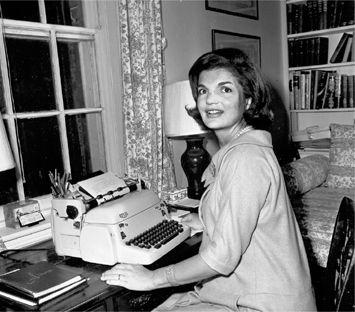
PART ONE
1960
1

It was with great trepidation that I approached 3307 N Street in Georgetown on November 11, 1960. I was about to meet the wife of the newly elected president of the United States, who I had just been assigned to protect, and I wasn’t looking forward to it at all. Being on the First Lady’s Secret Service detail was the last place I wanted to be. Looking back, I’m quite sure that Jacqueline Bouvier Kennedy was filled with even more anxiety about our meeting than I was. Neither of us had much choice in the matter. She could refuse to accept me—as she had done with the first agent assigned to her—but if I rejected the assignment, it would be the end of my career.
Just twenty-four hours earlier, I had been with outgoing President Dwight D. Eisenhower, as he played a post-election round of golf at Augusta National Golf Course. The fact that the Republicans had lost the election was still sinking in, and while the entire administration was about to change, one of the few things that would remain the same was the Secret Service. It had been a great honor for me to be on President Eisenhower’s Secret Service detail, and, while it would be bittersweet to see him leave office, I was excited for the challenge and experience of protecting the new president. It never entered my mind that my job might not be as secure as I thought it was.
There were just forty of us on the White House Secret Service detail—the elite team whose sole mission was to protect the president around the clock. We were not affiliated with any party or political group, and we were a tight group of men. The transition would require the Secret Service to adapt to the new president’s style, and even though I hadn’t yet met President-elect John F. Kennedy, it was obvious that protecting him was going to be a whole different ball game than it had been with Ike. We were going from a seventy-year-old former general who ran the White House with military precision, to an energetic forty-three-year-old Irish Catholic Democrat from Massachusetts with a lot of new ideas to take America into the 1960s.
I had been working the golf course with two other agents, and as soon as the president’s foursome finished the round, Jim Rowley, the Special Agent in Charge (SAIC) of the White House Detail, sent word that he needed to speak to the three of us. I had a feeling that this was probably my last game of golf with President Eisenhower and fully expected that Rowley was about to reassign the three of us to President-elect Kennedy.
When we walked into the office, Rowley explained that he had to shuffle the personnel in order to cover President Eisenhower, along with President-elect Kennedy, until the Inauguration in January.
First he addressed the other two agents, Jerry Blaine and Bill Skiles.
“Jerry and Bill, you’ll be on the president-elect detail. Mr. Kennedy is going to spend the next month and the holidays at his father’s estate in Palm Beach, Florida, so you guys need to get on a flight down there this evening.”
He warned that they would likely remain in Florida until the Inauguration, meaning they’d be away from their own families for Christmas and New Year’s, and suggested they have their wives arrange to get some warm- weather clothing to them. As I was listening to Rowley give Blaine and Skiles their new assignment, an uneasy feeling started to come over me.
Finally, Rowley turned to me and said, “Clint, Defense Secretary Tom Gates is here briefing the president and is returning to Washington shortly. I want you to fly back with him, then go to Secret Service headquarters and talk to Chief Baughman. The chief is expecting you.”
“Yes, sir,” I said with a nod.
SECRET SERVICE HEADQUARTERS was located in the U.S. Treasury Building, right next to the White House on Pennsylvania Avenue. I had never been in the chief’s office before, and in fact, had never personally met Chief U. E. Baughman, who had been head of the Secret Service since 1948. I was more than a little apprehensive when I checked in with his secretary, but I tried to sound as confident as possible.
“I’m Special Agent Clint Hill. Here to meet with Chief Baughman.”
“Yes, Mr. Hill, the chief is expecting you,” she said. “You may go on in.”
As I walked through the doorway into the chief’s spacious office, the first thing I saw was a plaque hanging on the wall that said:
Then, as I looked around the room, and saw not just Chief Baughman but his deputy chief and an assistant chief as well as two inspectors, a feeling of dread suddenly came over me. The entire top echelon of the Secret Service was standing there, apparently awaiting my arrival.
“Come on in, Clint,” Baughman said as he moved toward me and shook my hand. “Have a seat and make yourself comfortable.”
His cordial manner seemed to be an attempt to help me relax, but I still had an uneasy feeling about why I had been summoned. After introducing me to the other men in the room, Baughman asked casually, “Clint, how long have you been in the Secret Service?”
“I started in the Denver Field Office on September 22, 1958, sir.”
“And when were you transferred to the White House Detail?” Baughman asked.
“Just over one year ago. On November 1, 1959.”
Baughman asked a couple of more innocuous questions, and then each of the other men began asking me things, all sorts of things about my past, both personal and professional, as well as my attitude about protective activities.

